Handle Materials

Introduction
There are many types of handles to choose from. From the simple bare steel tang all the way up to fancy segmented handles using exotic materials. Which is the rite handle for your knife is largly a matter of opinion. Below you will find a list of the major materials available along with their pros and cons.
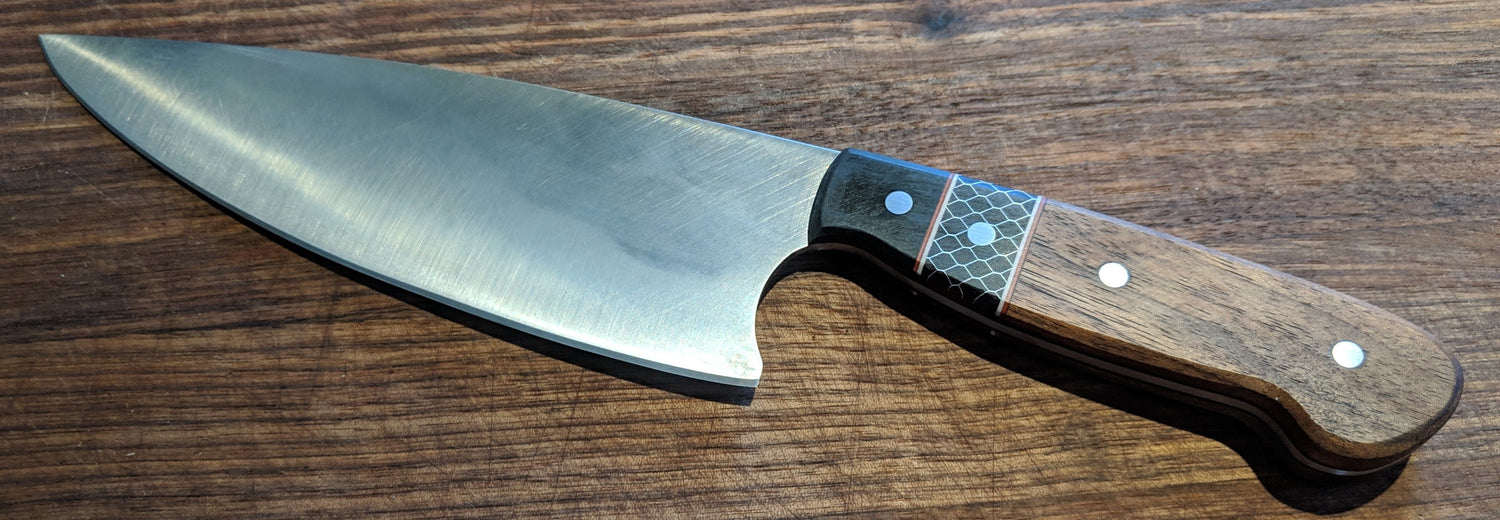
Natural Wood
Wood is a classic handle material going back as long as humans have been making knives. It is easy to work with, feels good in the hand and is visually attractive. However, it has some down sides that are tough to overlook. The wood grain that makes it so visually attractive is also its greatest weakness. Wood often cracks along the grain lines. This can happen in the manufacturing process or while the knife is stressed in use. Normally it happen over time as the wood ages and dries out. Wood absorbs water and swells then it dries out it contracts. This swelling and contracting causes stresses in the wood that ultimately lead to cracking. We can slow this process by applying a finish to the wood. But that finish must be maintained, or it will fail. The best finishes are penetrating oils. They do not change the wood in any appreciable way, and they protects the wood from water damage. But we must remember to reapply the oil at regular intervals, or the protection is lost. There are a variety of other finishes that form a sort of protective shell on the wood but do not penetrate deeply. Some of these age and crack even flaking off in some circumstances. This is not a something you want in a
kitchen knife.

Stabilized Wood
Stabilized wood is simply natural wood that has been impregnated with a resin. The resin is drawn into the wood under vacuum and completely penetrates it. Transforming the wood from a natural material to a hybrid natural/synthetic material. The advantage of stabilization is in this transformation from a natural material, with all its potential defect, into a stable synthetic that retains the look of the natural material while gaining all the structural integrity and durability of a synthetic material. Because this is at its heart a natural material, no two pieces of stabilized wood will be the same. A set of knives made from stabilized wood will feature natural variation across the set. Stabilized wood makes for a beautiful handle material that is durable and requires no maintenance, unlike natural wood.
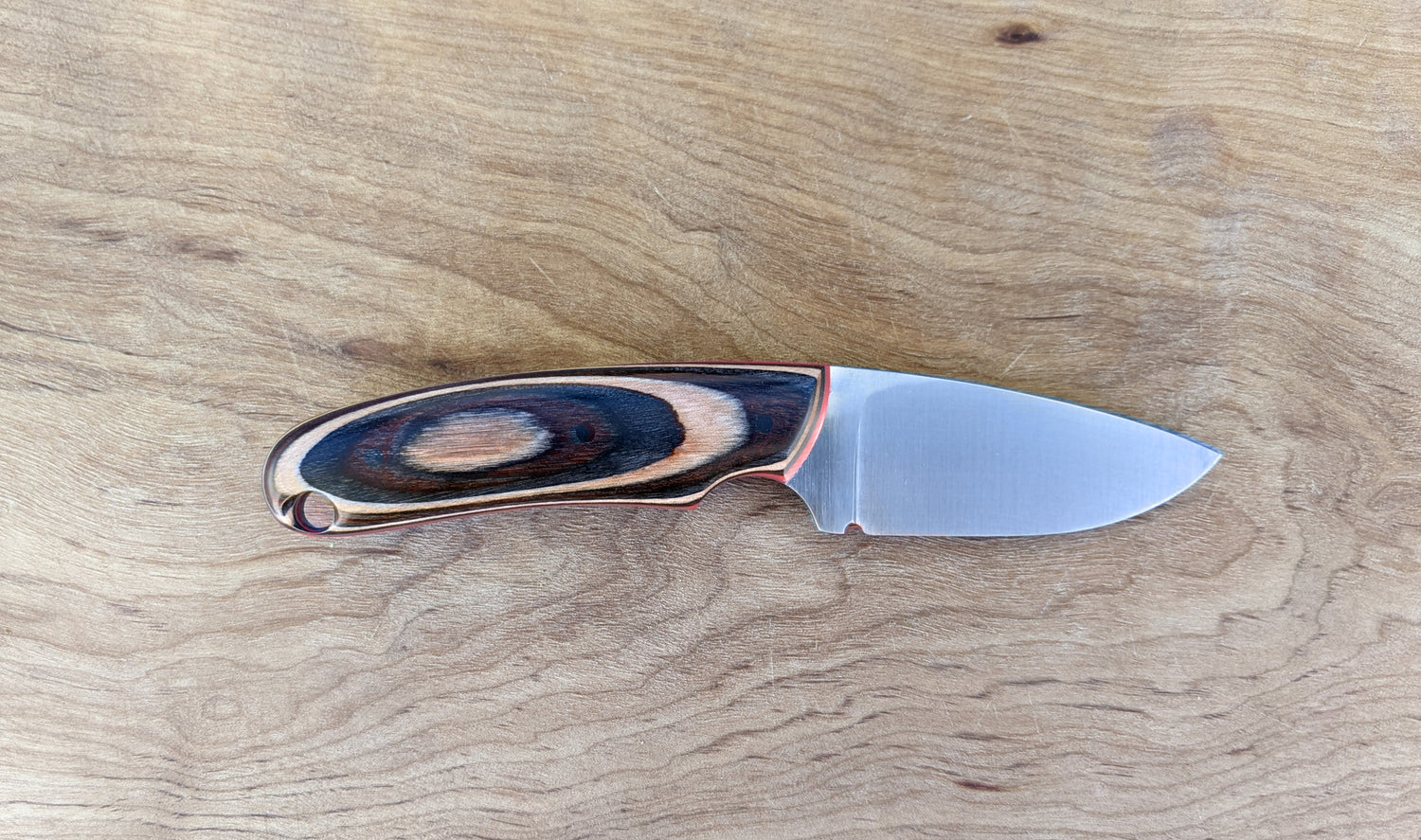
Laminated Wood
Laminated wood is essentially ply-wood. Although it is made from higher quality wood plies and normally resin replaces wood glue as the adhesive. It comes in many color combinations, some with striking alternating colors.

G-10, Fiberglass, Carbon Fiber etc.
All are laminated materials made by impregnating a woven fabric with resin, usually epoxy. They come in a good variety of colors and are quite tough. Toughness and strength vary depending on the fabric and resin combination. Some of these materials can be rather expensive and they are all rather toxic to work with.
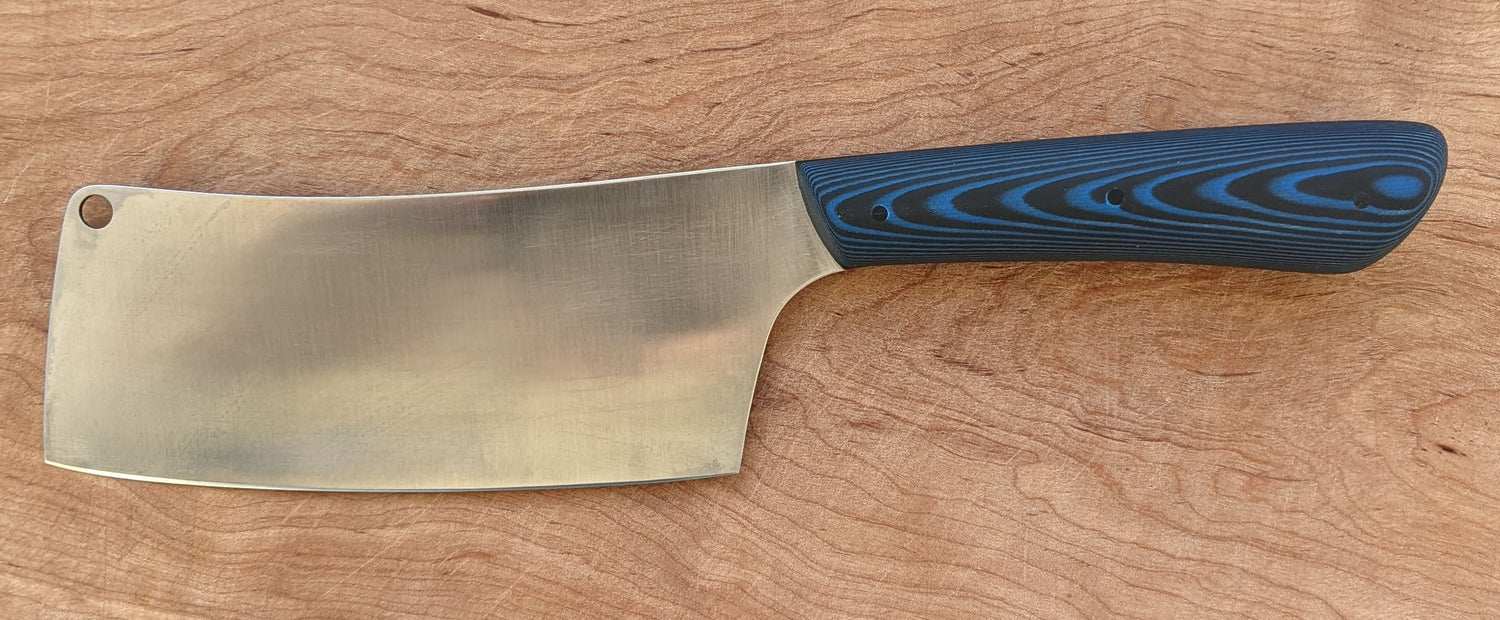
SureTouch
SureTouch is another laminated material made from alternating layers of G-10 and black rubber. It maintains most of the strength inherent to G-10 with the added grip of rubber. It makes for an excellent handle that remains easy to grip even when wet, which is ideal for a kitchen knife. When shaping into a handle there is a strong visual contrast between the alternating layers. The only real downside is the possibility of damage to the black rubber over time.

Resin
Resin is essentially one half of the laminated materials with out the reinforcing material. There are many types of resin with different properties. Some are hard and brittle while others are tough and soft, as well as everything in between. They come in an endless variety of colors and patterns. Some have swirls or metallic flakes in them. Some even have pinecones and other objects encapsulated in them. The possibilities are almost as endless as the creativity of the person making them. Some of them make for good knife handles while others do not.
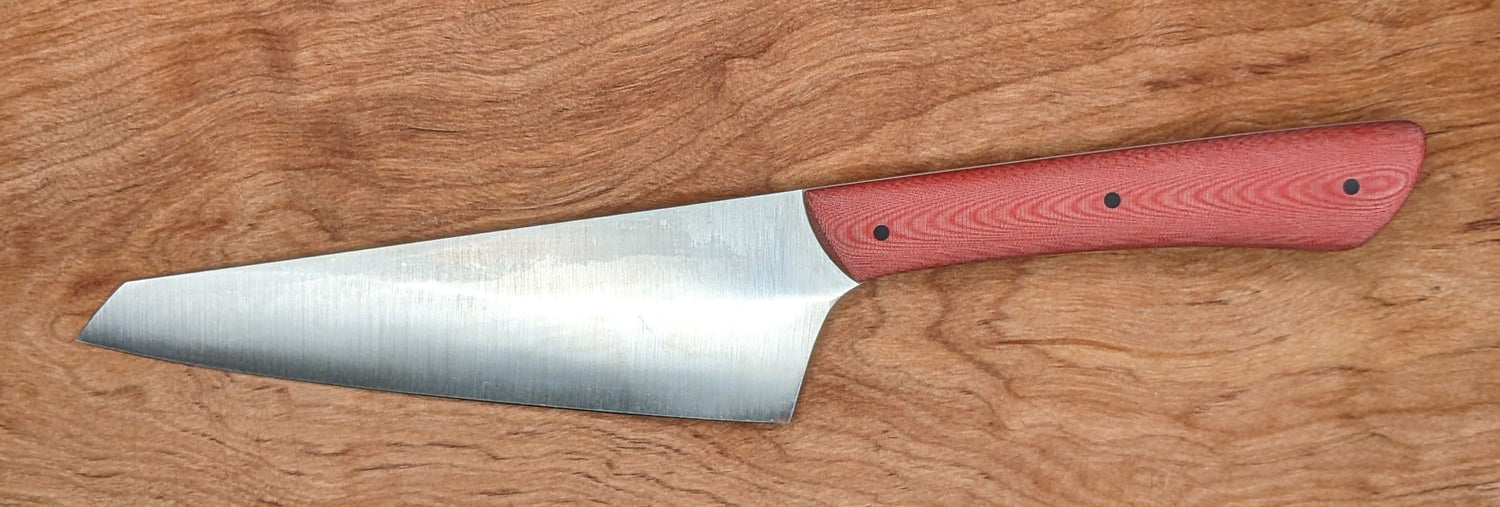
Micarta
Micarta is an exceptionally strong and durable material that comes in a great variety of colors. It is also a brand name that is often used generically to describe products manufactured by other companies. It is made by laminating sheet material with a resin. The sheet material can be almost anything from paper to burlap making for a variety of finished looks.
Traditionally the resin used has been phenolic but other resins are also used. Micarta is highly resistant to shock, heat, water, and most household chemicals. You really have to go out of your way to damage the stuff. It makes for great handle material on knives, especially when you consider how many color combinations it comes in. The laminated sheet material is exposed when shaping a handle revealing a woodgrain like effect that can be quite striking.

Bone, Horn, Stag Antler, Mother of Pearl etc.
Most other natural materials have some of the same problems as wood, mainly they age and crack while others are fragile from the start. They have their place in traditional applications or as accents in another handle material, but they do not make good handle materials on their own. This is of course my own opinion and others will disagree with me and that is just fine. There are many beautiful knives out there with natural material handles particularly in the Art Knife world. We do not make Art Knives; we make practical everyday knives. As such we stick to more practical materials.
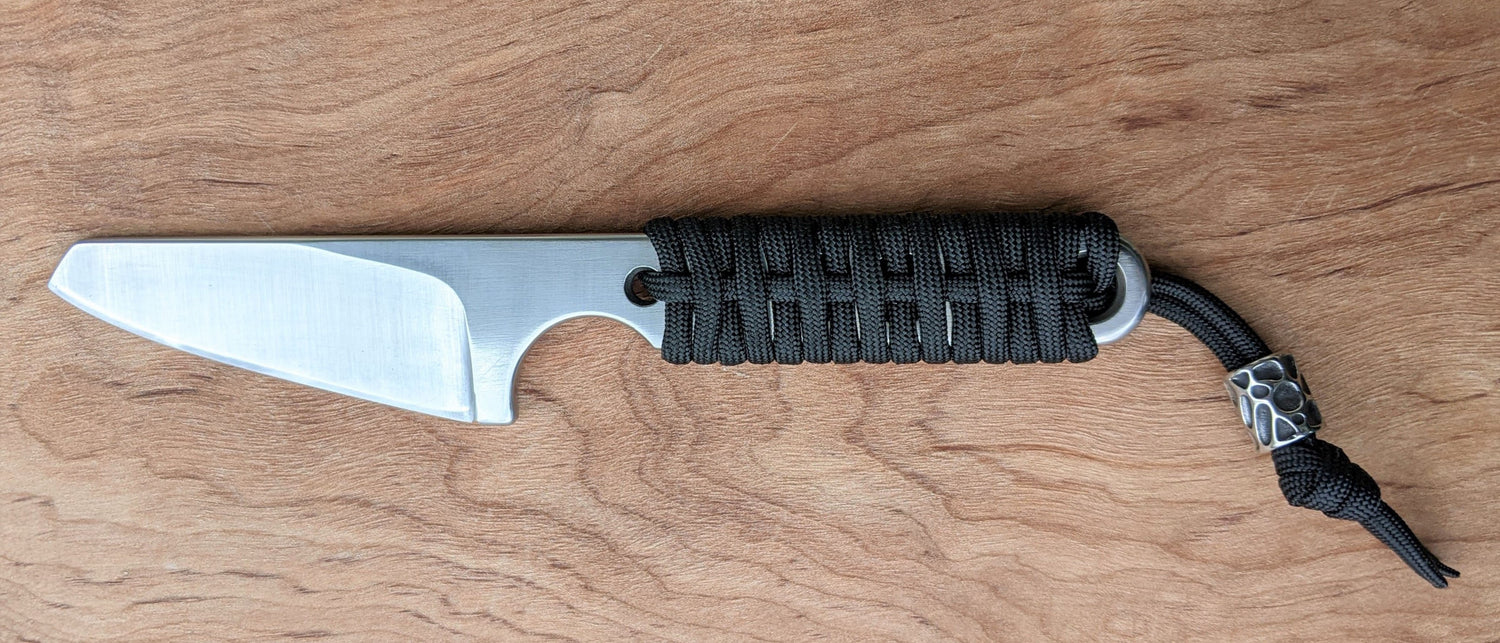
Paracord, Leather Cord, Twine, etc.
A knife handle can be as simple as cord wrapped around the tang of the blade. It is simple, effective, and inexpensive. The wrap can be simple or a complex woven pattern. There are many colors to chose from and many ways to wrap a handle.
